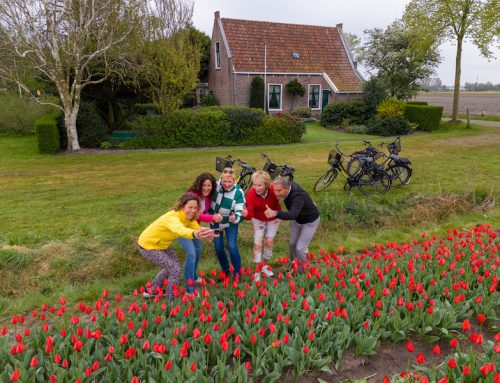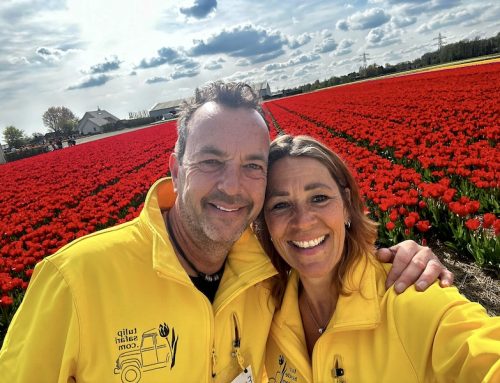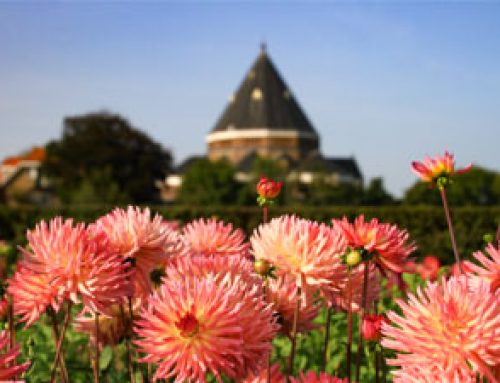The Netherlands is known for Keukenhof, and the Tulip fields are no exception. The Tulip fields in Holland are a huge tourist attraction, with millions of tourists visiting each year to see the beautiful colors and flowers of these fields. They’re so popular that they’ve become one of the most iconic symbols of Dutch culture—and an important part of their economy.
The Tulip plant has a long history, and it’s easy to see why it’s so popular. The bulbous flower is beautiful, and it can be found in many different colors, from white to red. But what do you know about them? Where do they come from? How do they grow?
If you’ve ever wondered about these questions and more, book a tour at Tulip Bicycle Tour to learn everything about Tulips in one day. You’ll get to see the fields up close and personal as you ride through them on your bicycle—this is the perfect way to enjoy this unique experience! We also offer private tours for groups of any size and can customize a tour to meet your needs.
When are the Tulip bulbs planted?
When most people think about growing Tulips in Holland, they think about the tricky conditions that make this possible. Because the Netherlands surely knows its rainy days.
If you visit Holland in autumn, you will see many empty fields. But what you may not expect, is that when the days are getting darker and colder, the Tulip bulbs are being planted. The soil is still relatively warm at this time of the year. Growers who plant their Tulip bulbs early have the chance to see them “sprout” and flower earlier in the season. Another reason why Tulip bulbs are planted in October and November is that when there is frost in the ground or if the soil is wet, a Tulip bulb will not survive and will rot during this period.

How is the Tulip bulb planted?
Tulips are planted 15 centimeters deep into the soil. The reason for this is that Tulips are very sensitive to frost, so they need to stay as close to the ground as possible. If they are not planted deep enough, they will be damaged by frost and do not have the strength to grow out of the ground during their flowering period.
In the winter, Tulip bulbs need to grow roots. This is because they are dormant during the cold season. The frost also brings something good. When the ground is frozen solid, it keeps the soil from getting too wet, which means your bulbs will be able to grow their roots in the best way possible—and give you beautiful flowers all summer long!
Fun fact… Did you know that Tulips are planted in nets? They are planted in nets because it is easier to get the Tulips out of the ground in spring.
Spring has arrived!
When winter is over, the Tulips can finally be harvested. However, the farmer still needs to closely monitor the Tulips. Rotting or infection of the Tulips isn’t uncommon with Tulips, so Tulip growers are always on the lookout for fungi, viruses, and bacteria that can infect their flowers. But this is a battle they cannot lose. If they do not control these fungi, they will go rampant and infect all Tulips in their fields. The Tulip grower will also begin to select for viruses preventively. The weaker plants, or plants that already have a virus, are removed. These plants can be identified by a lack of leaves or flowers.
Blooming of the Tulips
The Tulips bloom from mid-April to mid-May, when the weather is warm and sunny. This is peak season, which means that huge flocks of tourists are spending a few days in Lisse. It can make it quite hard to find good parking spaces or to enjoy driving at all. A better way is to explore the area with a bike tour. We are offering tours every day, so you can plan your trip whenever you want. Our guides are experts on everything Tulip-related, and they love nothing more than sharing their knowledge with you on a beautiful bike ride through the Dutch Bulb area. We will make sure that your time with us is fun, safe, and memorable!
If you’re thinking about booking a tour with us but aren’t sure whether it’s right for you, we’d love to chat with you! Give us a call today: +31 (0) 617176249 or send us a message at contact@tulipbicycletour.com







